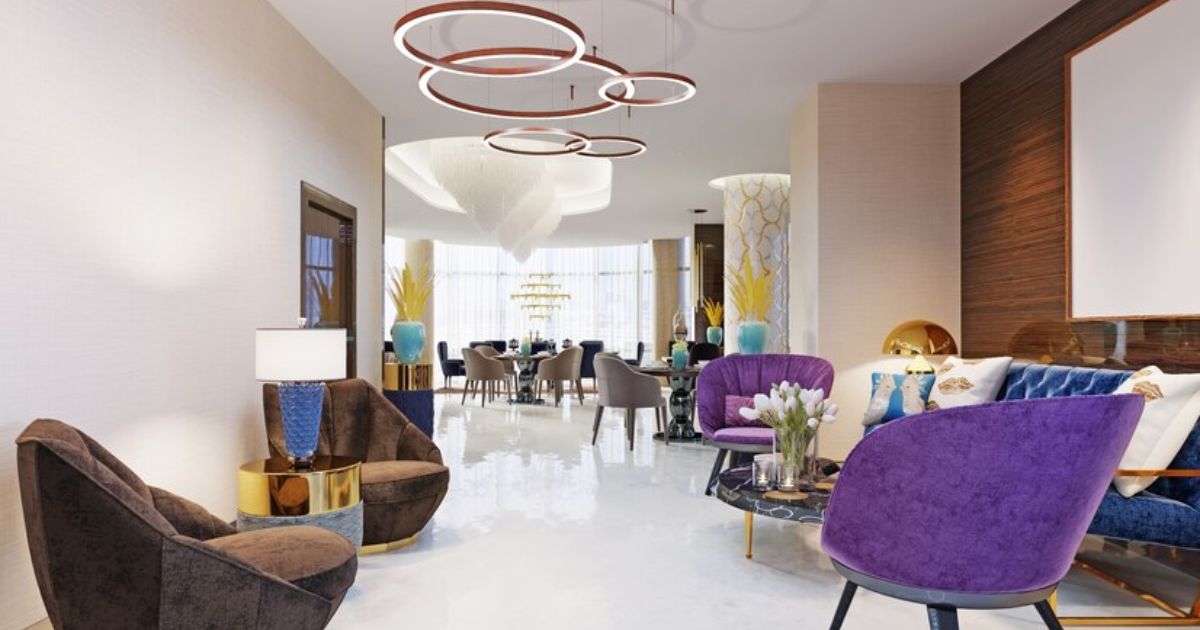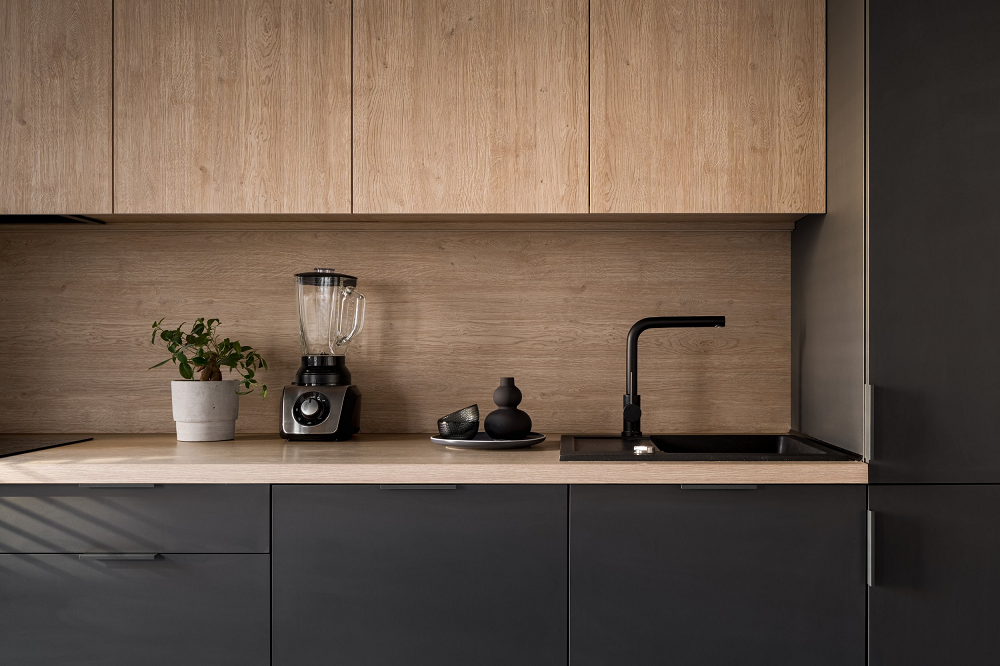Home Interior Designers in Chennai understand that interior design goes beyond just aesthetics; it has a profound impact on our mental health and overall well-being. The spaces we inhabit—our homes, workplaces, and public areas—affect our mood, productivity, and even how we interact with others. Increasingly, architects and interior designers are recognizing the potential of thoughtfully designed spaces to boost mental health, reduce stress, and foster a sense of calm. Here’s a deep dive into how interior design plays a pivotal role in enhancing mental well-being.
1. The Power of Color Psychology
Colors have a strong influence on emotions. For instance, blue and green are associated with calmness and tranquility, while red and orange are known to evoke energy and excitement. Designers often use soft, natural colors to create a relaxing atmosphere, especially in spaces meant for relaxation, like bedrooms and lounges.
In workspaces, a balance of cool and warm tones can enhance focus and creativity. Green is also particularly beneficial in these areas, as it’s linked to creativity and productivity. Using the right color scheme can make a significant difference in how people feel in a room, so designers consider the purpose of the space when choosing a palette to maximize positive mental effects.
2. Natural Light and Its Role in Mental Health
Exposure to natural light is essential for regulating our circadian rhythms, which affect our sleep-wake cycles, mood, and even immune function. Natural light also increases serotonin production, which helps stabilize mood and feelings of well-being.
Modern interior design incorporates large windows, skylights, and open layouts to allow ample sunlight to flood spaces, enhancing both visual appeal and mood. Even the strategic placement of mirrors can help amplify natural light, brightening spaces that may otherwise feel confined or dark. In workplaces, natural light reduces stress, minimizes eye strain, and has been shown to boost productivity, resulting in happier, healthier employees.
3. Biophilic Design: Bringing Nature Indoors
Biophilic design is the concept of incorporating natural elements like plants, water features, and organic materials into indoor spaces. This approach is based on the idea that humans have an innate connection to nature, and studies have shown that exposure to natural elements can lower blood pressure, reduce anxiety, and improve focus.
Introducing plants into interiors can improve air quality, reduce noise levels, and bring a sense of tranquility. Large indoor plants, green walls, or even a small indoor garden can make an impactful difference. Water features like small fountains or aquariums add a soothing auditory element, further contributing to mental relaxation. Using natural materials like wood and stone can create a warm and comforting environment, helping individuals feel more grounded and connected to the natural world.
4. Furniture and Space Layout
The layout of a room significantly impacts how we move and feel within a space. An open, clutter-free layout promotes a sense of calm and order, whereas cramped or cluttered spaces can evoke stress and restlessness. Interior designers consider traffic flow, purpose, and comfort when arranging furniture and choosing furnishings.
Ergonomic furniture that supports good posture and comfort is crucial, particularly in work environments. Comfortable seating, spacious desks, and correctly positioned screens can prevent physical discomfort and boost productivity, indirectly supporting mental well-being. In homes, cozy sofas, soft rugs, and intimate seating arrangements encourage relaxation and socialization, promoting positive emotions and deeper connections among family members.
5. Sensory Elements and Their Effects on Mood
In addition to visual design, interior spaces can be tailored to engage other senses. Sound, texture, and scent all influence our emotions and mental health. Soft textures like plush cushions, rugs, and throws can evoke feelings of comfort and warmth, making a space feel inviting and safe. Smooth textures like polished wood and glass create a clean, refined aesthetic, adding to a sense of calm and order.
Sound also plays a role, as a quiet, peaceful environment can foster focus and relaxation. Noise-canceling elements, such as thick carpets, curtains, or soundproofing materials, can dampen external noise, creating a serene atmosphere. Scents like lavender and chamomile have been shown to reduce stress and anxiety. Aromatherapy diffusers, scented candles, and fresh flowers can introduce these calming fragrances, creating a multi-sensory experience that supports mental well-being.
6. Personalization and Self-Expression
Personalization allows individuals to express their identity and preferences within their space, which can significantly enhance a sense of belonging and comfort. Spaces that reflect a person’s personality and values can boost self-esteem and provide a sense of security. Whether it’s through artwork, family photographs, or curated items with sentimental value, incorporating elements that have personal meaning can make spaces feel more welcoming.
For workplaces, providing employees with the freedom to personalize their workstations can improve morale and mental health. Small adjustments like adding plants, photos, or preferred decorations can make workspaces feel less sterile and more connected to the individual, promoting comfort and reducing stress.
7. Minimalism and Decluttering for Mental Clarity
A cluttered space can lead to a cluttered mind, whereas a minimalist design can create a sense of calm and clarity. Minimalism emphasizes simplicity, functionality, and order, with carefully chosen elements rather than excess. Decluttering isn’t just about getting rid of physical items; it’s also a way to create mental space, reduce visual distractions, and foster an organized mindset.
Minimalist design relies on clean lines, ample storage, and a restrained color palette, which all help in creating a tranquil environment. For individuals prone to anxiety or stress, a minimalist space can serve as a soothing retreat from the chaos of everyday life. In shared spaces, such as living rooms or dining areas, maintaining order and simplicity can enhance relaxation and encourage meaningful social interactions.
8. Cultural Sensitivity and Inclusivity
Cultural backgrounds and personal values can influence how individuals perceive space and what makes them feel comfortable. Interior designers who incorporate cultural elements or traditional motifs can help foster a deeper sense of identity and belonging, especially for people far from their homeland. Inclusive design considers factors such as accessibility, sensory sensitivities, and diverse cultural aesthetics, ensuring that spaces are welcoming to people of all backgrounds and needs.
9. Technology Integration for Convenience and Control
Smart technology allows people to control their environment more easily, which can reduce stress and create a more comfortable atmosphere. Automated lighting, temperature controls, and noise levels can be adjusted to match an individual’s mood or activities. For instance, dimming lights in the evening can signal to the brain that it’s time to relax, while brighter lighting in the morning can help improve alertness and energy levels. The ability to control aspects of an environment according to one’s needs provides a sense of control, which can be beneficial for mental health.
Conclusion
Best interior designers in Chennai understand that interior design is more than just arranging furniture or choosing paint colors—it’s a powerful tool that can shape our emotions, behavior, and overall mental health. By prioritizing natural light, color psychology, biophilic elements, and thoughtful layouts, interior designers can create spaces that nurture well-being and reduce stress. Incorporating personalization, minimalist principles, and inclusive design further ensures that these spaces are welcoming, functional, and emotionally supportive. As we continue to spend more time indoors, whether at home or in workspaces, recognizing and utilizing the mental health benefits of well-designed interiors becomes increasingly important. Through these design principles, our spaces can become not only visually appealing but also deeply supportive of our mental and emotional well-being.




